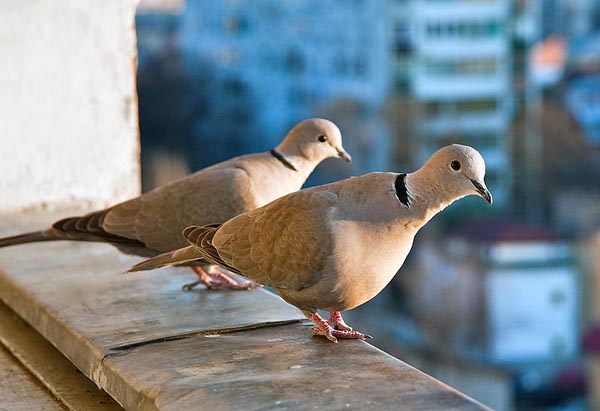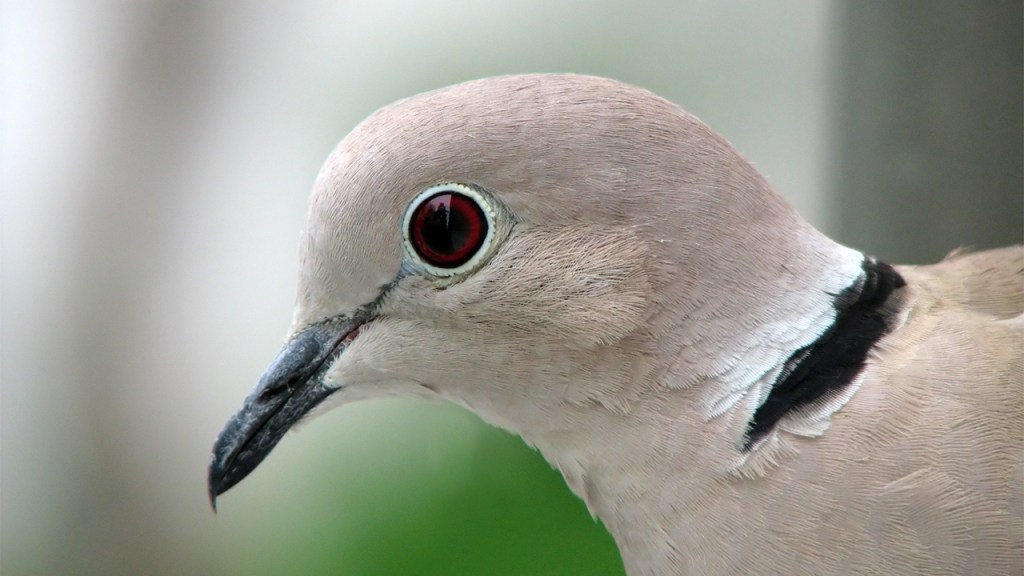The Great Backyard Bird Count (GBBC) — one of the largest citizen science initiatives in the world – annually documents a wide variety of bird population trends.
To my mind, one of the most interesting has been the dramatic spread of the non-native Eurasian collared dove across North America.
The GBBC asks citizen birders to watch an area for at least twenty minutes sometime during a four-day period in mid-February (this year’s count concluded yesterday), and record the birds they see.
Just ten years ago, seeing a Eurasian collared dove would have been a novelty. No more: the doves are now commonly reported by birders in most of the United States.
GBBC data tell the story of this rapid spread.
In the 1970s, the Eurasian collared dove was introduced to the Bahamas. By the early 1980s, the non-native birds made their way to South Florida, where they established populations. Then they began spreading north and west.
Their range appears to have expanded slowly at first. A look at GBBC reports from 1998 show a lot of sightings in Florida, with some birds reported in Texas, Alabama and Arkansas.
By 2001, the doves reached California.
Last year’s bird count results showed the Eurasian collared dove had colonized much of the country. It has not (yet) been reported in New England, but it has reached as far north as Alaska.
The GBBC’s video map dramatically illustrates this expansion.
In my state of Idaho, the doves were first recorded in 2005 by two backyard birders. In subsequent years, the bird was commonly reported in Idaho’s eastern corners. Last year, 132 GBBC participants reported 719 doves throughout the state.
I saw my first Eurasian collared dove in our backyard in 2008 – a banded bird that may have been an escaped pet. Last year, I began seeing the doves hanging around our neighborhood. This year was the first that I noted the species during my own participation in the Great Backyard Bird Count.
What’s going on here? Should conservationists be concerned about this spread?
Unlike some dove species, Eurasian collared doves aren’t migratory. However, they do readily expand into new suitable habitat. In fact, in their native Asia, Eurasian collared doves have been rapidly expanding their range as well – colonizing new countries every year.
The dove is one of those species that adapts well to humanity. The trees, power lines and bird feeders of suburbia provide perfect habitat. The Eurasian collared dove is almost always seen near homes and farms, not unbroken forest or prairie.
Research indicates it is not adversely affecting native mourning doves or other birds. It may simply be filling a new habitat niche created by suburban habitat. But it is still early in the spread.
Could Eurasian collared doves become an invasive threat? That remains to be seen.
Citizen science projects like the GBBC and another citizen initiative, Project FeederWatch, will help scientists continue to track the spread and impacts of the species. It will be interesting to learn what this year’s count found about Eurasian collared doves. If past years are any indication, their populations will likely have grown and spread into new areas of the country.
Have you seen Eurasian collared doves in your area? Have you noted other trends during your backyard bird counts? Let us know what you’re seeing!





I first notice these doves in Nanaimo, Vancouver Island, BC, about 7 years ago. The first year they were accompanied by a single Spotted dove, which hasn’t been seen since.
Collared doves are now abundant in Nanaimo and found in all parts of the city.
We just saw a pair in our backyard in Southern CA.
I have 2 0f these I visit with every day in Wilson Wyoming. Love ❤️ them.
We have a family of eight in our back yard in Irricana, Alberta. Have been here for quite a while. Doing quite well, thank you very much.
Hi,
I just saw this Eurisan Collared Dove in my backyard in Monterey, CA. Very pretty and very cautious. Jay chased it away from the feeder.
In 2010,I first saw what seemed to be a pair .This year I have seen at least 12 birds .when I saw the first pair , l didn’t think I had ever seen a dove like them. Glad to know what they are. I am Out of Larinburg N.C.
Had a Eurasian Collared dove eat seeds and entertain my G-kids on my front porch in San Lorenzo(94580) California. Was alone as we could tell, but acted quite tame walking closer to my kids while feeding. 12/04/2016
Sighted first ones in my memory this fall 2016 approx 10 miles west of Pasadena in the foothill communities north of the 210 freeway. Two seem to hang out here with sightings mostly in the evening.
The Eurasian collared doves first appeared on July 7,2016 at our home in Dawson Creek, B.C. Canada. Today, November 26,2016, they are still here! It appears to be a family of four although one, perhaps the male, seems to have gone to greener pastures.
We have plenty of snow with temperatures down to -13C so far, but that does not seem to bother them.
They get along well with all the other birds and are nonagressive by waiting their turn at the feeders. They seem to be grain eaters and have porked up plenty since they first came.
We have been birders for many years, but these birds took a while to identify because they were not in the usual bird book we use.
Their cooing is quite loud but not irritating. They are beautiful in flight and easy to identify. We look forward to seeing them each day.
Hope this helps.
I have two Eurasian collared doves in my back yard as of November 14, 2016. I took several photos of them. I live in Coon Valley, Vernon County, WI, an an avid photographern of wildlife
Have seen them for the first time this fall in Cranbrook B.C. They roost in our trees and wait for food.
Saw 3 today at my feeder (about an inch of snow down)
Northern Alberta
Yes, I spotted a pair today along Alamo Creek, Vacaville (one collared, one not) , Solano County, California.
I see them every day, in my backyard . They are very skittish and take off at any noise. Beautiful birds. I feed the mourning doves, and a little later the Eurasian dove appear. I live in southern Ca. Simi Valley to be exact/
November 1, 2016:
We–my wife and I–live in Lawndale CA (Los Angeles County). A pair of what I surmise are Eurasian collared doves. They have been coming to our yard, where we sprinkle wild bird seed, every day for about five months. They are a very light gray, as opposed to the tan color I see in the on-line pictures; otherwise they are the same as the Eurasion CDs. They are definitely not like the African variety.